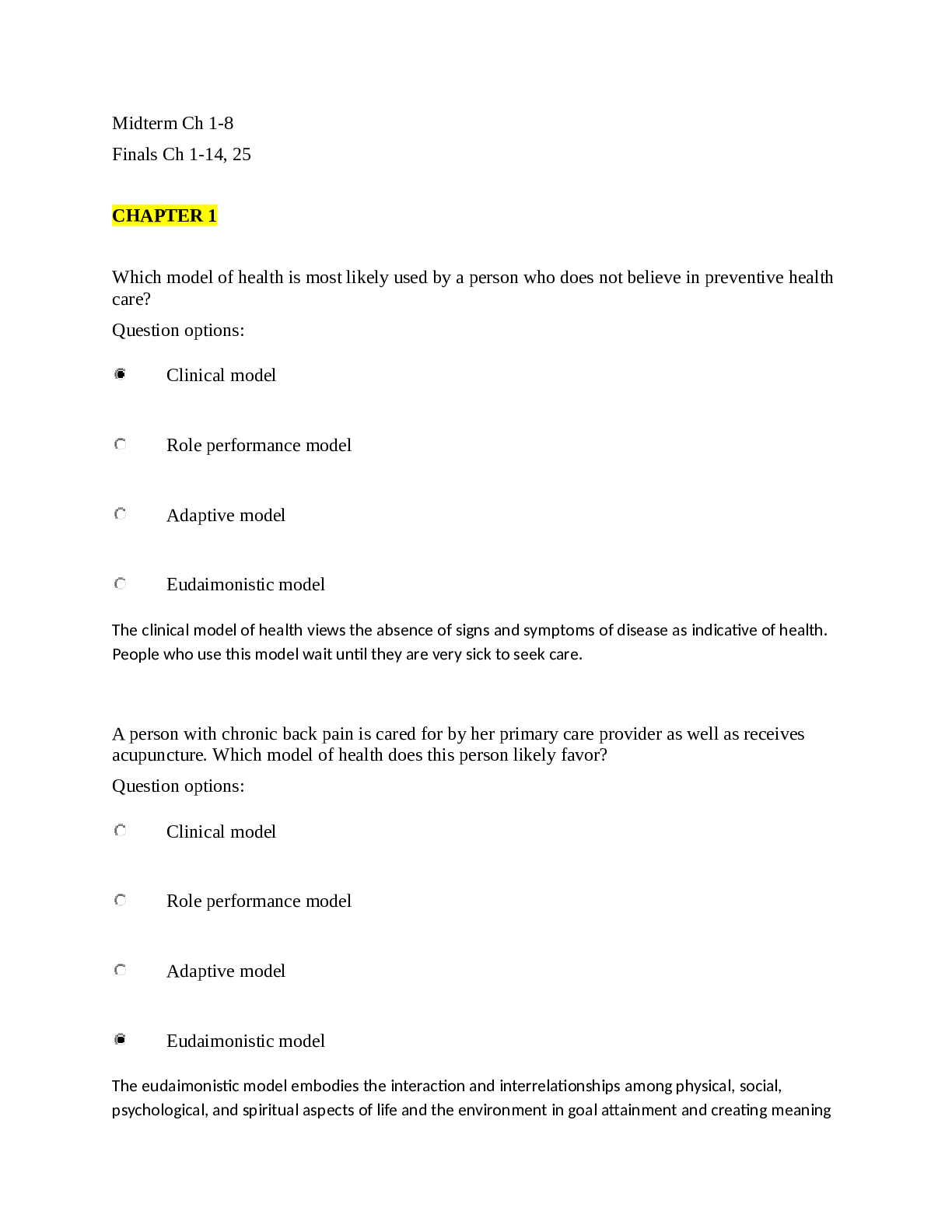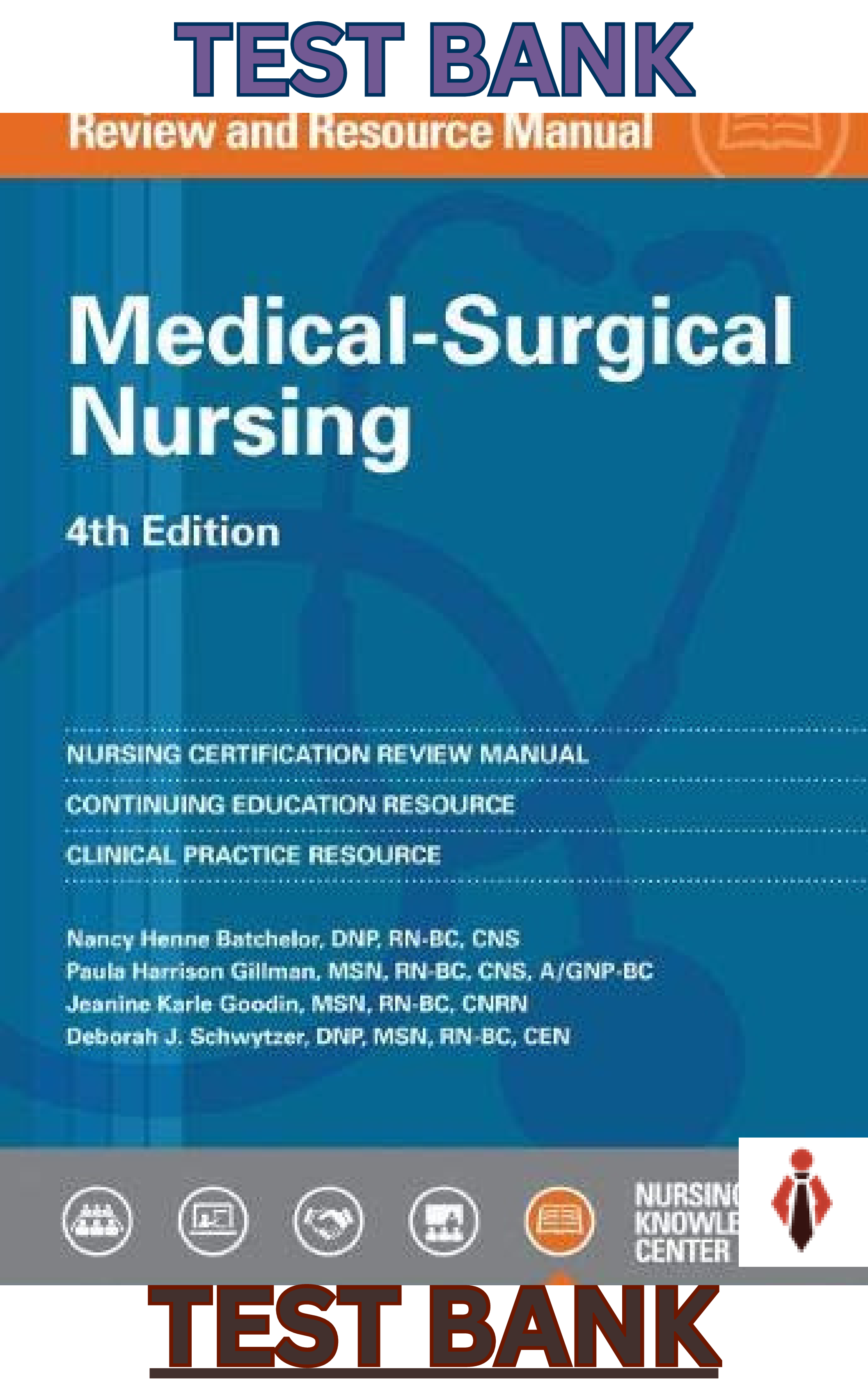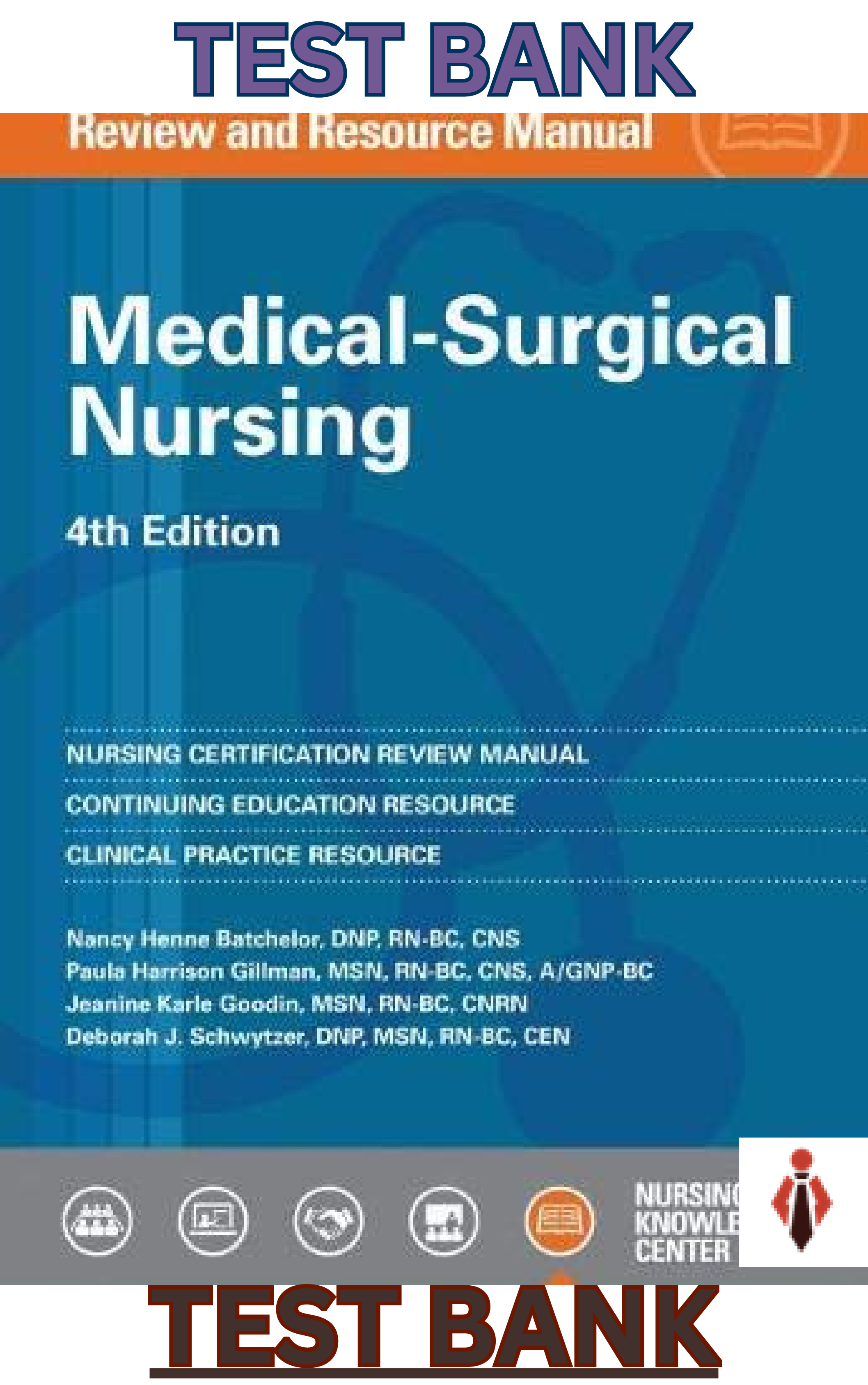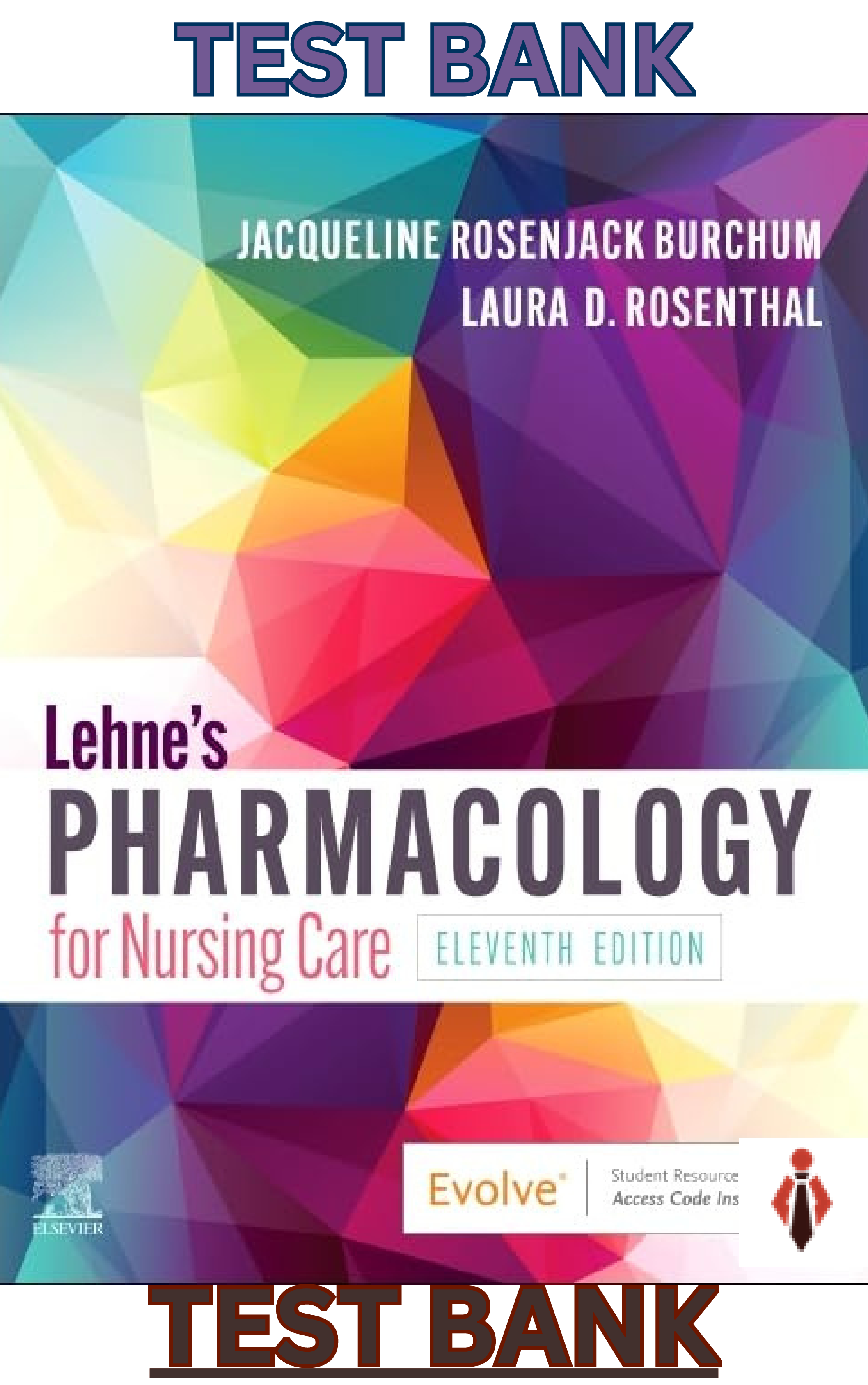Health Care > TEST BANK > Dulcan’s Textbook Of Child And Adolescent Psychiatry TEST BANK- ALL ANSWERS ARE 100% CORRECT (All)
Dulcan’s Textbook Of Child And Adolescent Psychiatry TEST BANK- ALL ANSWERS ARE 100% CORRECT
Document Content and Description Below
Dulcan’s Textbook Of Child And Adolescent Psychiatry TEST BANK- ALL ANSWERS ARE 100% CORRECT 1.1 Infant psychiatry focuses on which of the following age groups? A. From birth to first birthday. B... . From birth through age 3 years. C. From birth to preschool years. D. From conception to age 3 years. E. From conception to preschool years. 1.2 Which of the following is the strongest outcome predictor of early childhood development? A. Presence or absence of pregnancy complications. B. Birth weight. C. Child’s temperament. D. Parental relationship. E. Primary caregiving relationship. 1.3 Which of the following assessment or diagnostic tools uses the DSM-IV multiaxial system? A. Diagnostic Criteria: Zero to Three, Revised (DC:0–3R). B. Child Behavior Checklist 1½–5. C. Infant-Toddler Social and Emotional Assessment (ITSEA). D. Ages and Stages Questionnaires: Social-Emotional. E. None of the above. 1.4 Which of the following is not considered a key element of the infant/toddler assessment? A. History of presenting problem. B. Medical history. C. Developmental history. D. IQ. E. Family history. 1.5 Which of the following is the only diagnostic interview with published data to support its reliability for assessing infants and toddlers? A. Preschool Age Psychiatric Assessment (PAPA). B. Diagnostic Infant Preschool Structured Interview. C. Crowell procedure. 14 | D. Beck Depression Inventory. E. Parenting Stress Index. Chapter 2 Assessing the Preschool-Age Child Select the single best response for each question. 2.1 The significant developmental differences between preschool- and school-age children require a tailored approach to obtaining a history and mental status exam. Which of the following principles should be kept in mind when evaluating a preschool-age child? A. The most meaningful evaluation occurs when the child is evaluated without the primary caregiver. B. The mental status examination should be conducted in the context of play. C. The preschooler should be evaluated in one session to avoid conflicting results. D. It is desirable to include only the primary caregiver when evaluating the child. E. All of the above. 2.2 The Washington University School of Medicine Infant/Preschool Mental Health (WUSM IPMH) clinic uses a standardized format for evaluating preschool-age children. Which of the following statements correctly describes this evaluation? A. The assessment is conducted in one 3-hour session. B. Free play is observed with the primary caregiver. C. A semistructured observation with secondary caregivers is included. D. Emotional, psychological, family, and developmental history is obtained only from the mother. E. None of the above. 2.3 Which of the following actions should be taken by parents to prepare their preschooler for the play evaluation? A. Parents should provide honest information to the child about the purpose of the evaluation. B. Parents should not disclose to their child that they have already met with the examiner. C. Parents should avoid discussing with the child that the examination will involve play. D. It is best to inform the child about the examination over several days to a week so he/she may ask questions. E. Parents should not prepare their child for the examination. 2.4 Which of the following statements regarding conduct of the free-play assessment with the preschooler is true? A. A brief separation between the parent and child midway through the free-play session is useful. B. The clinician should avoid disclosing to the child what was learned about his or her problems from the meeting with the parents. C. When the parent asks questions of the therapist during the play session, the therapist should freely answer the questions in order to reduce the parents’ anxiety. 16 | D. The examiner should not respond to the child’s bids to engage in play. E. All of the above. 2.5 Several standardized semistructured interviews may be useful in the dyadic assessment of parent and child. Which of the following are characteristics of the Parent-Child Early Relational Assessment (PCERA)? A. The parent blows bubbles to elicit affect from the child. B. Tasks of escalating difficulty are performed by the child and parent and videotaped for further review. C. The parent and child perform a structured task in which block designs are made from sample cards. D. None of the above. E. All of the above. Chapter 3 Assessing the Elementary School–Age Child Select the single best response for each question. 3.1 The key developmental milestones for the school-age child are related to A. Separation and individuation. B. Initiation and rapprochement. C. Object constancy and individual consolidation. D. Peer identity and social identity formation. E. Intimacy and generativity. 3.2 Which of the following is key to a successful evaluation? A. Seeing the child first. B. Seeing the parent(s) first. C. Seeing the child and parent(s) together. D. Seeing the referral professional first. E. Establishing a collaborative relationship between the clinician and the child and his or her family. 3.3 Key procedural information that should be covered in the first evaluation session includes all of the following except A. Office/departmental procedures. B. Plan/process of the evaluation. C. Communication with school. D. Confidentiality. E. Safety plans. 3.4 For the clinician, appropriate steps in the evaluation of a child whose parents are divorced include all of the following except A. Attempt to include both parents in gathering information. B. Agree to complete a custody evaluation. C. Clarify which parent has primary custody and request a copy of the custody agreement. D. Clarify health insurance responsibility. E. Clarify the role of the clinician. 3.5 Common presenting problems in school-age children include all of the following except 18 | A. Sexualized behavior. B. Academic difficulties. C. Peer difficulties. D. School refusal. E. Social anxiety. Chapter 4 Assessing Adolescents Select the single best response for each question. 4.1 Which of the following statements concerning the assessment of adolescents is true? A. Because mothers and fathers may have divergent views about the adolescent’s problems, only one parent should be interviewed. B. Involve as few informants as possible in collecting information to minimize conflicting opinions. C. Understanding how the adolescent was referred for treatment is not important. D. Prior medical records from primary care physicians should be obtained as part of the assessment. E. Data from rating scales or psychological testing are rarely helpful in establishing the correct diagnosis. 4.2 In the initial assessment of an adolescent, which of the following strategies is usually most productive? A. Interview one parent, then the adolescent, then the other parent. B. Interview the adolescent alone first, then the parent or parents. C. Interview both parents, then the adolescent. D. Interview the parents together with the adolescent. E. None of the above. 4.3 What information obtained from adolescents should be shared with the parents? A. All details obtained from the adolescent should be shared with the parents. B. No information obtained from the adolescent should be shared with the parents. C. Safety issues involving the adolescent, such as suicidal behavior, should be shared with the parents. D. None of the above. E. All of the above. 4.4 An evidence-based approach that has been successfully used for interviewing adolescents is A. Psychodynamic interviewing. B. Dialectical behavioral interviewing. C. Cognitive-behavioral interviewing. D. Interpersonal interviewing. E. Motivational interviewing. 4.5 Goals for the initial parent interview include all of the following except A. Data collection. 20 | B. Sharing differential diagnostic possibilities. C. Understanding the parent’s point of view. D. Establishing a relationship with the parents. E. None of the above. 4.6 A respondent-based interview that is highly structured and designed to be administered by trained lay interviewers is A. Diagnostic Interview Sc [Show More]
Last updated: 11 months ago
Preview 1 out of 381 pages
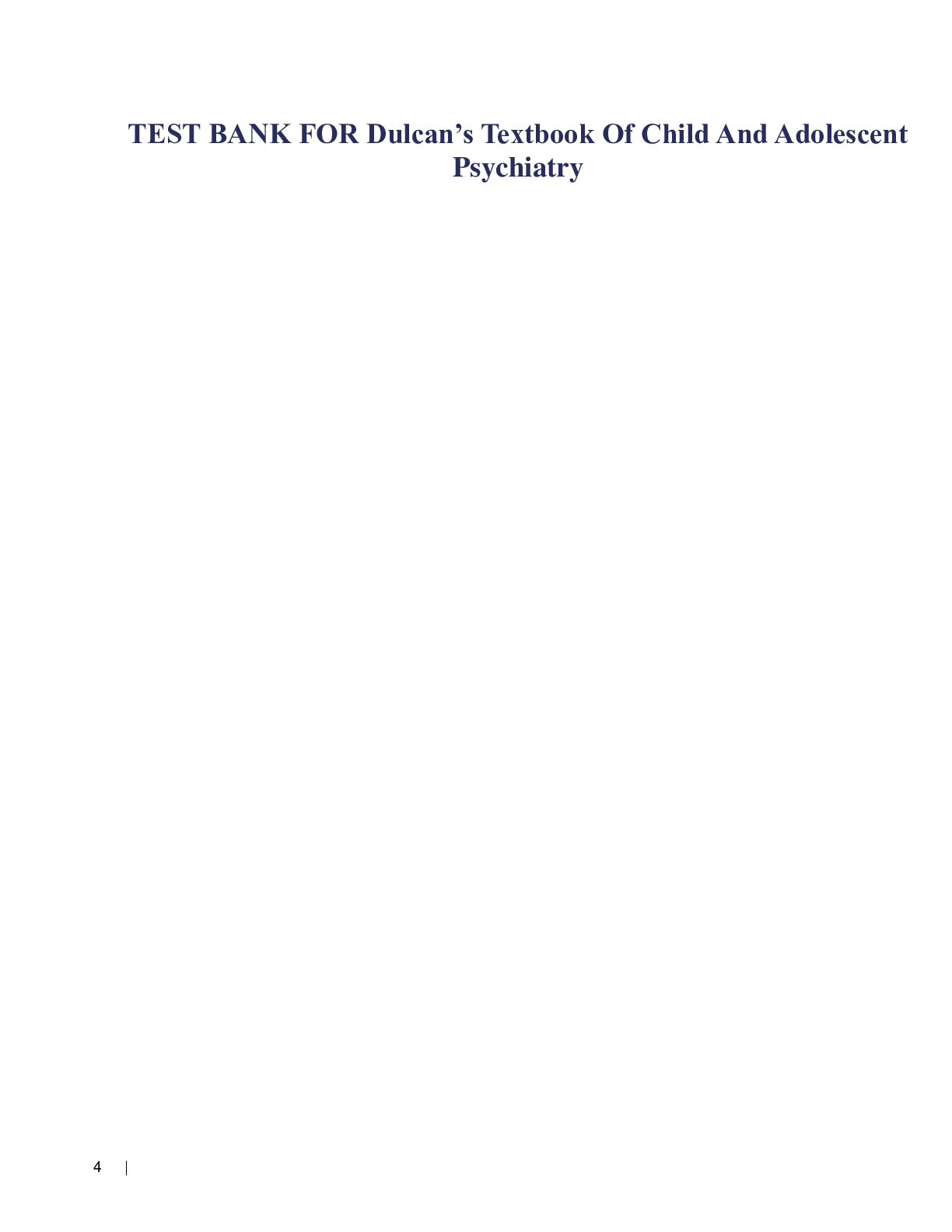
Reviews( 0 )
Document information
Connected school, study & course
About the document
Uploaded On
Mar 17, 2022
Number of pages
381
Written in
Additional information
This document has been written for:
Uploaded
Mar 17, 2022
Downloads
1
Views
107

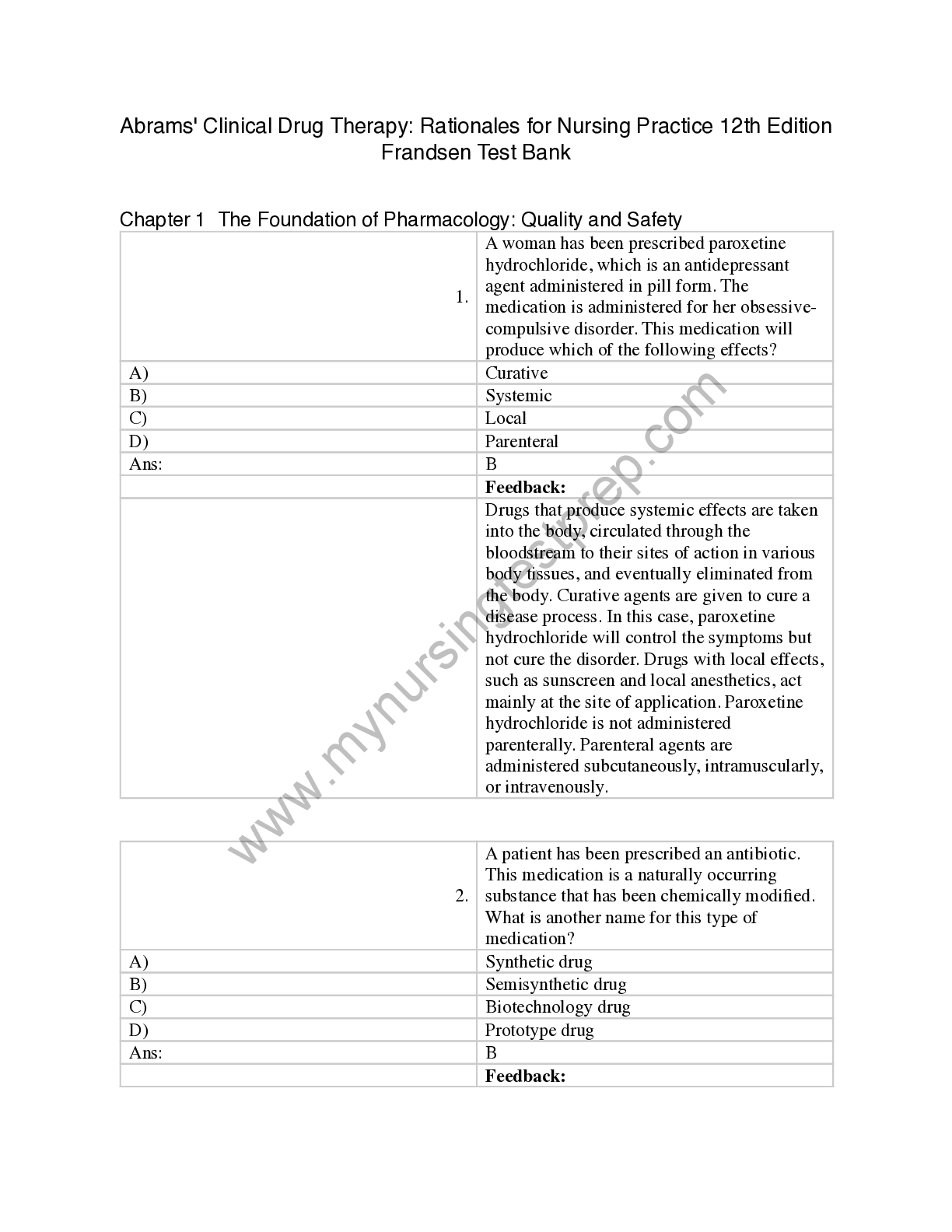






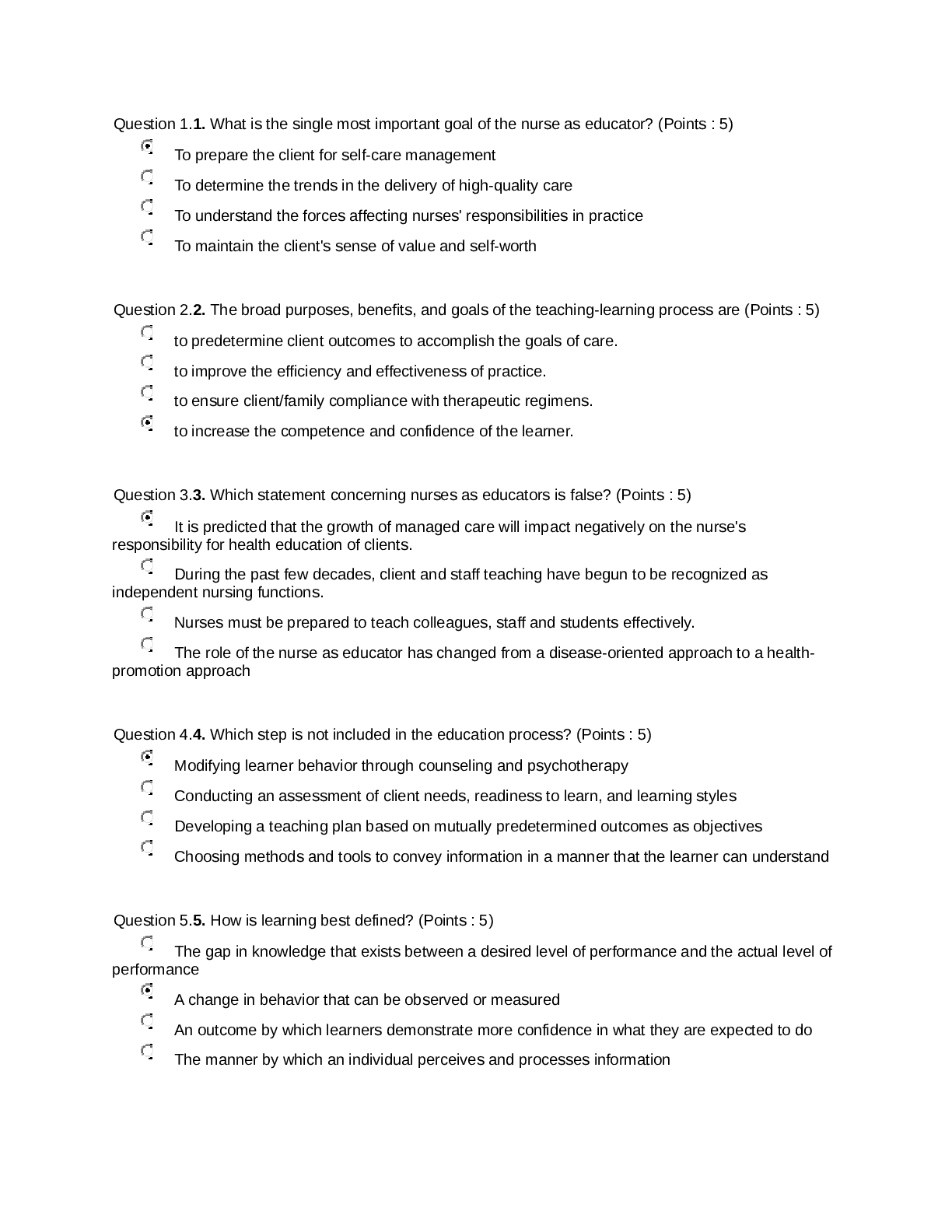
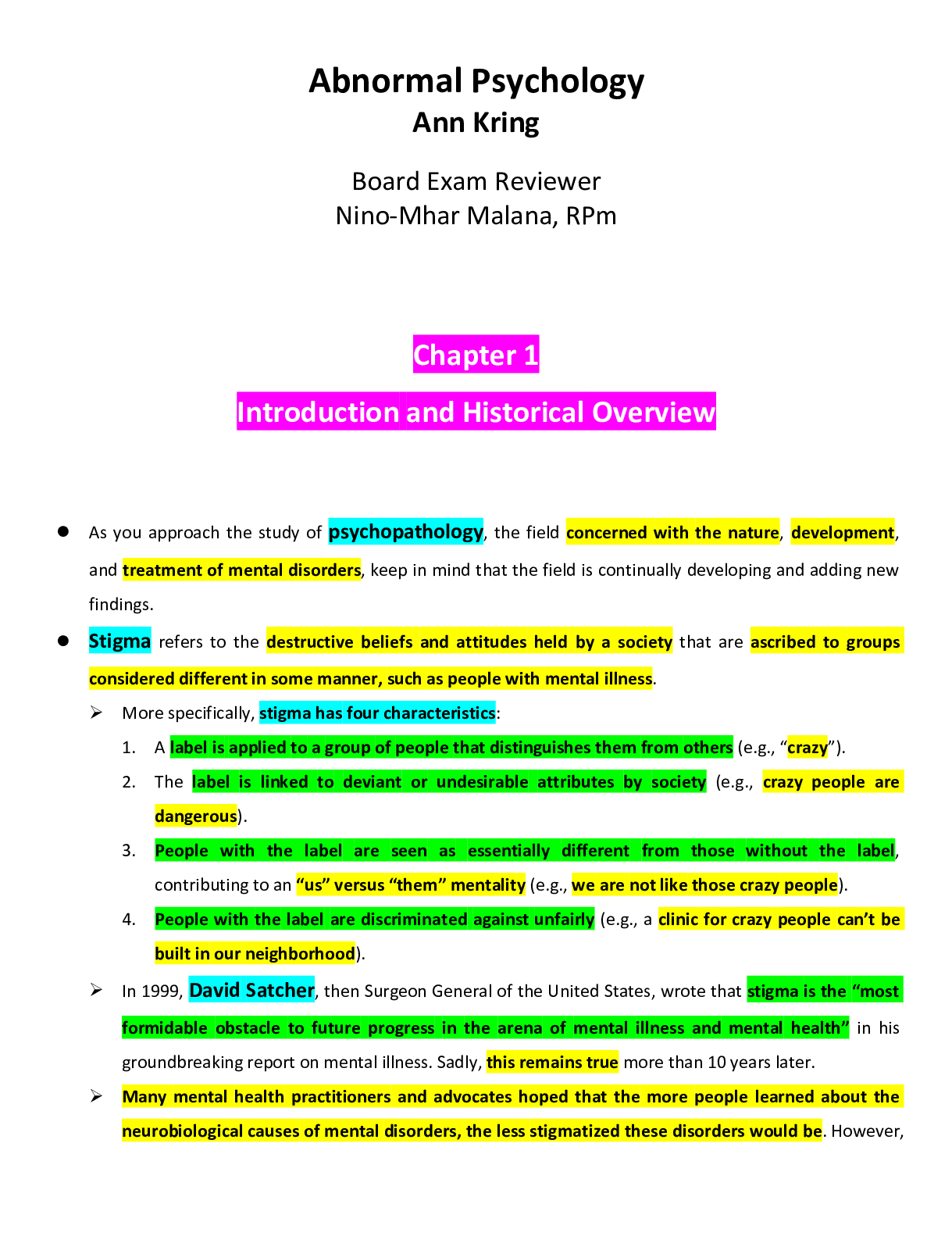
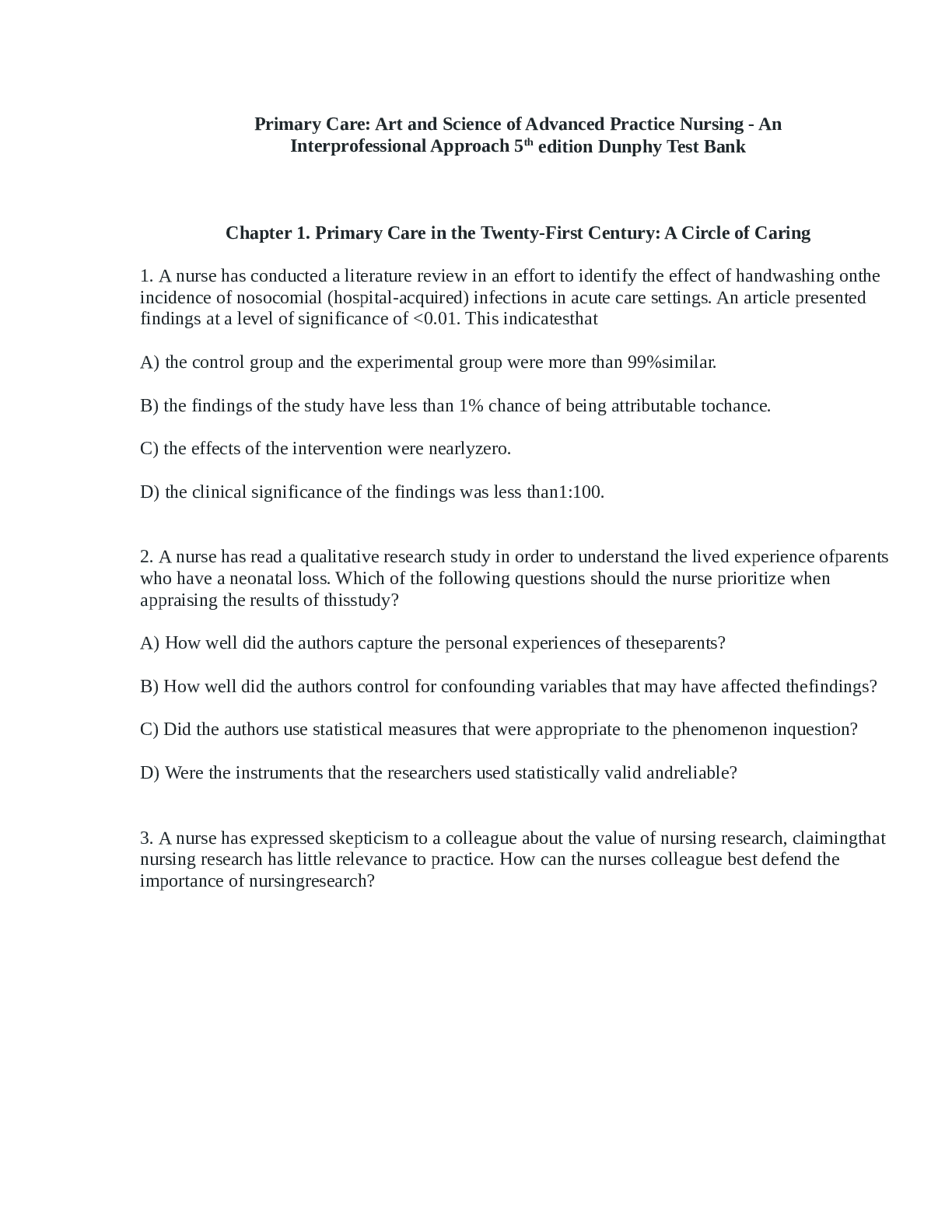
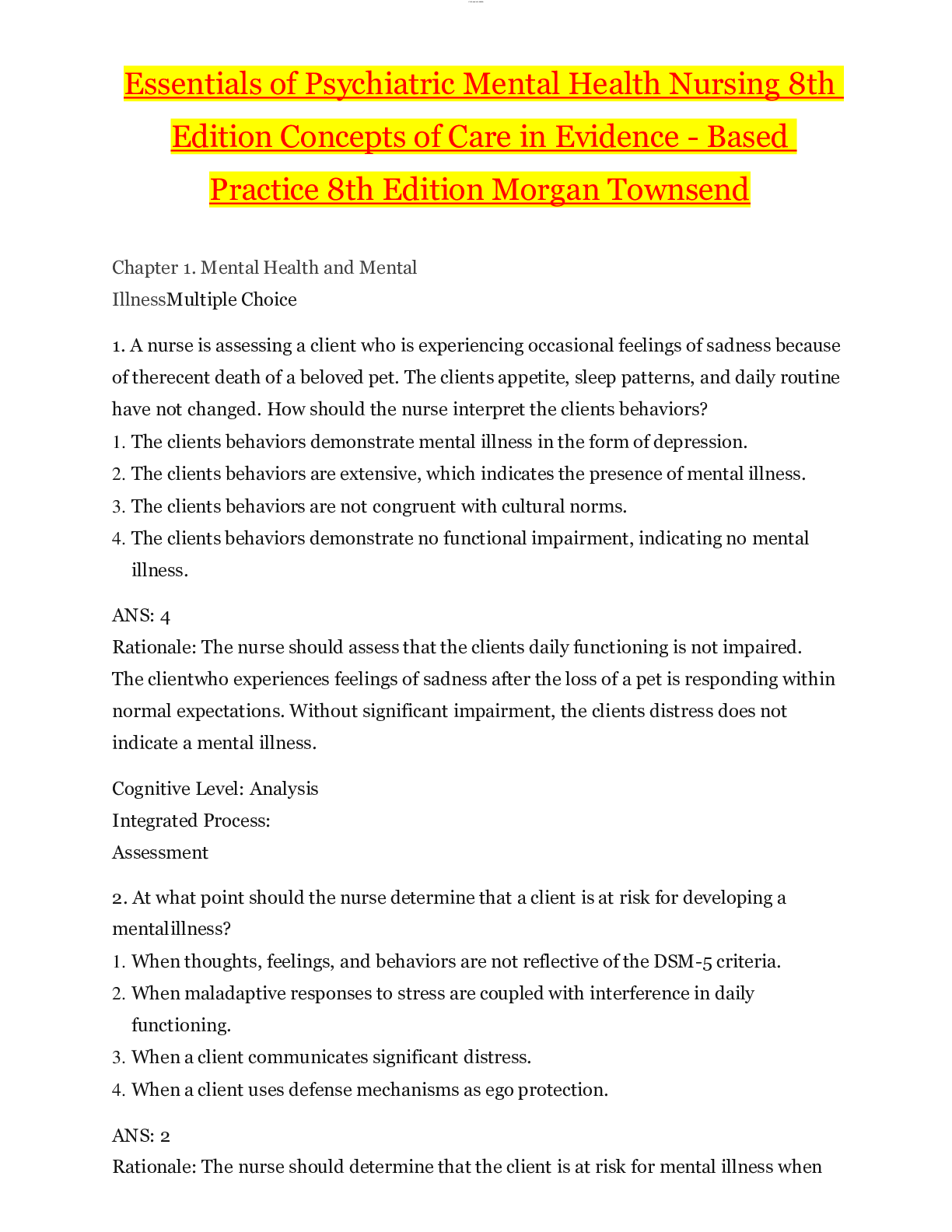


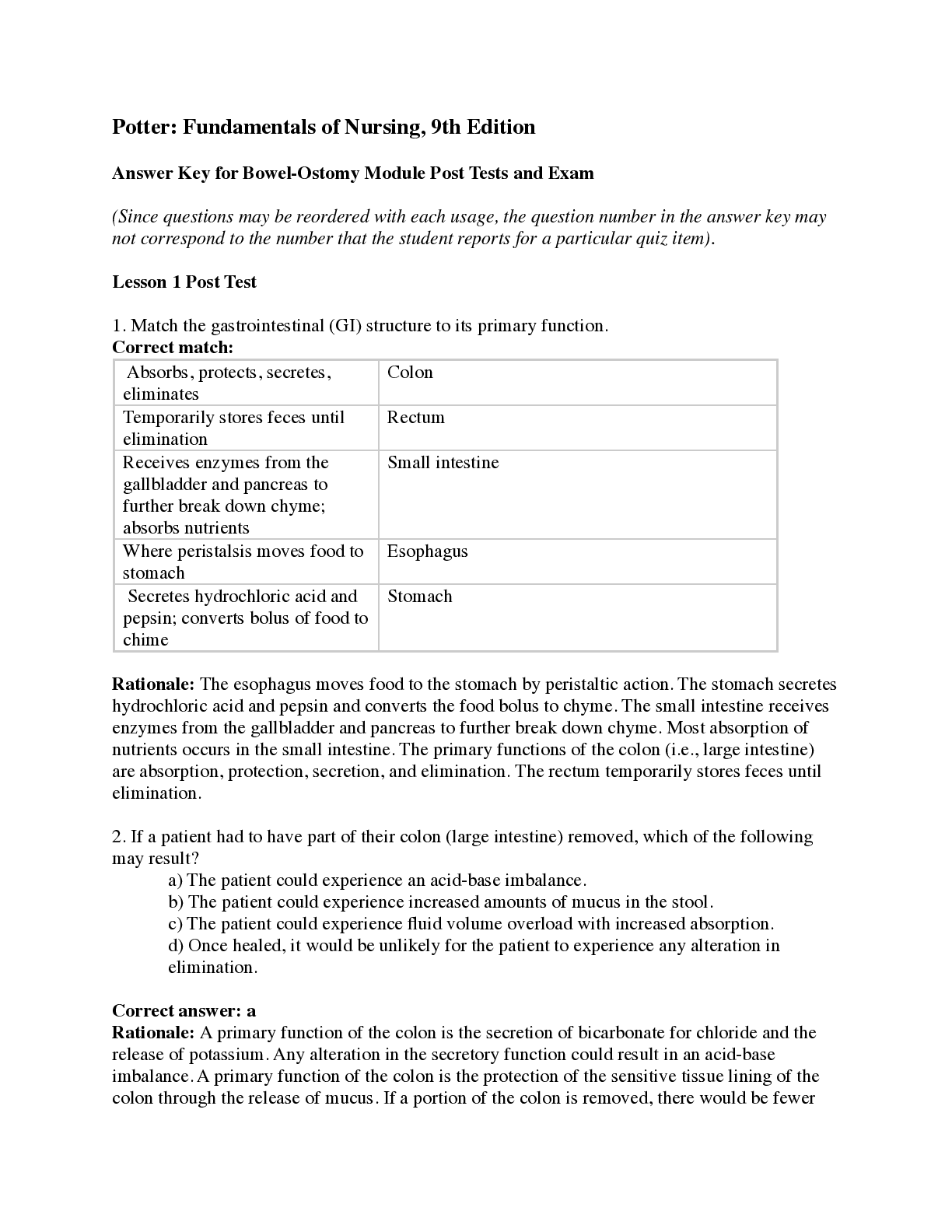
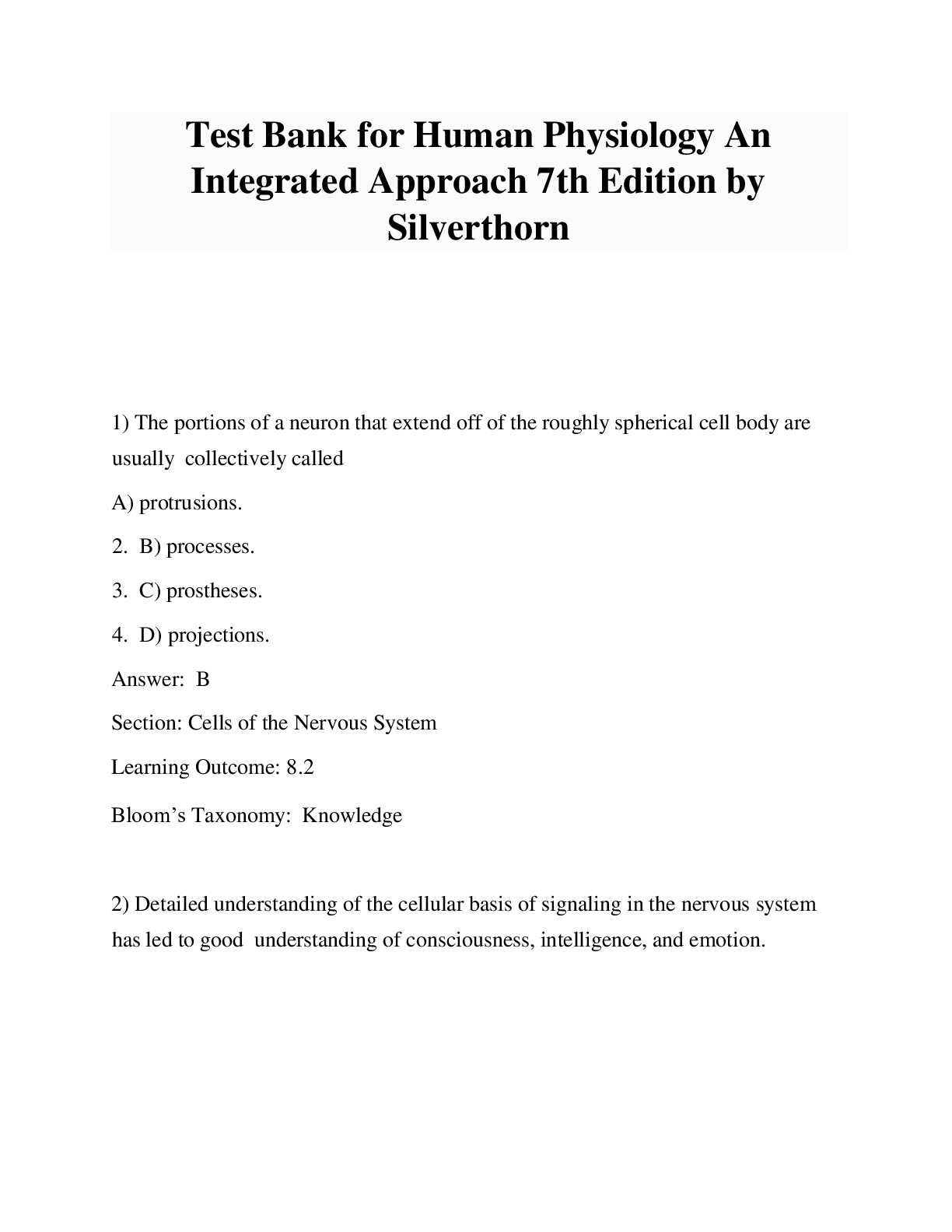
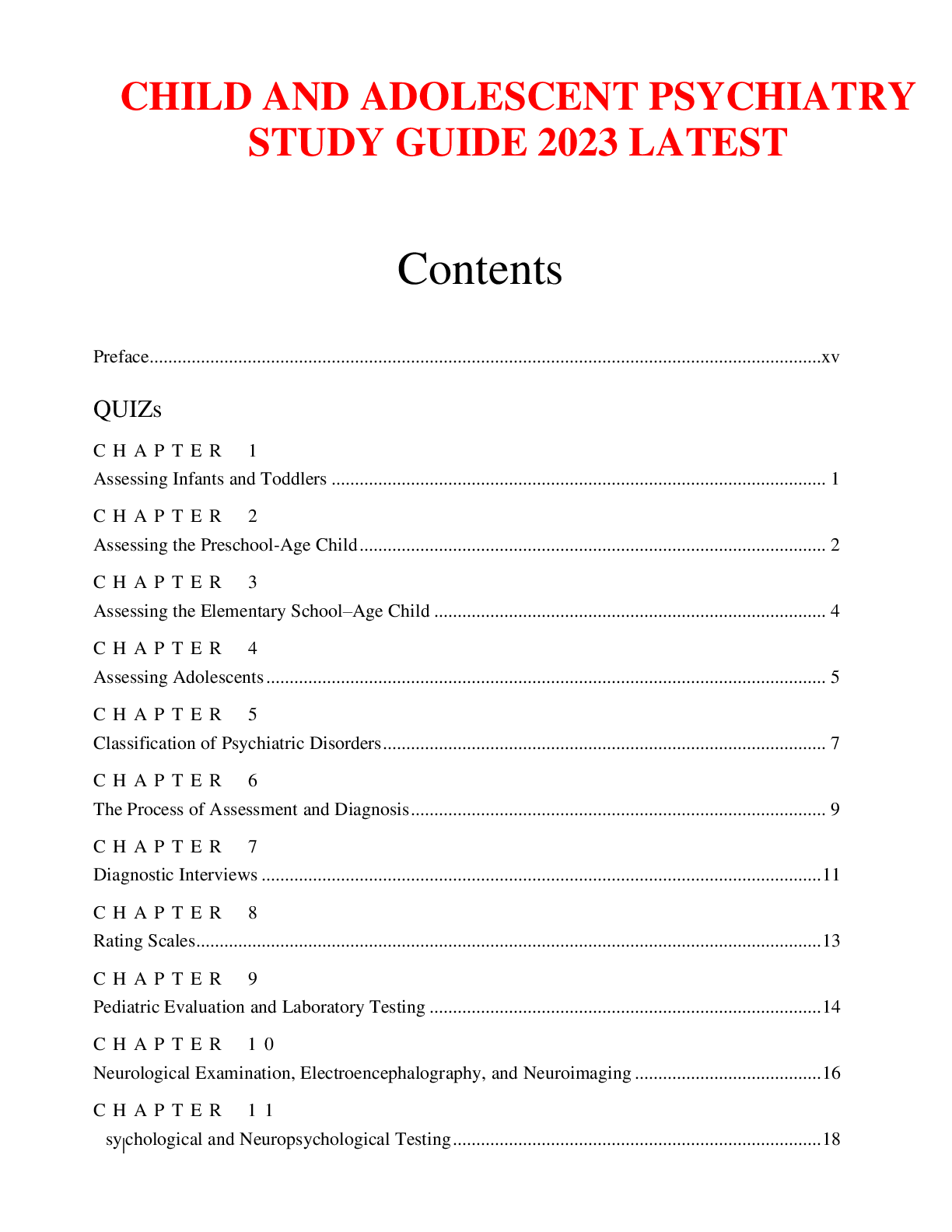


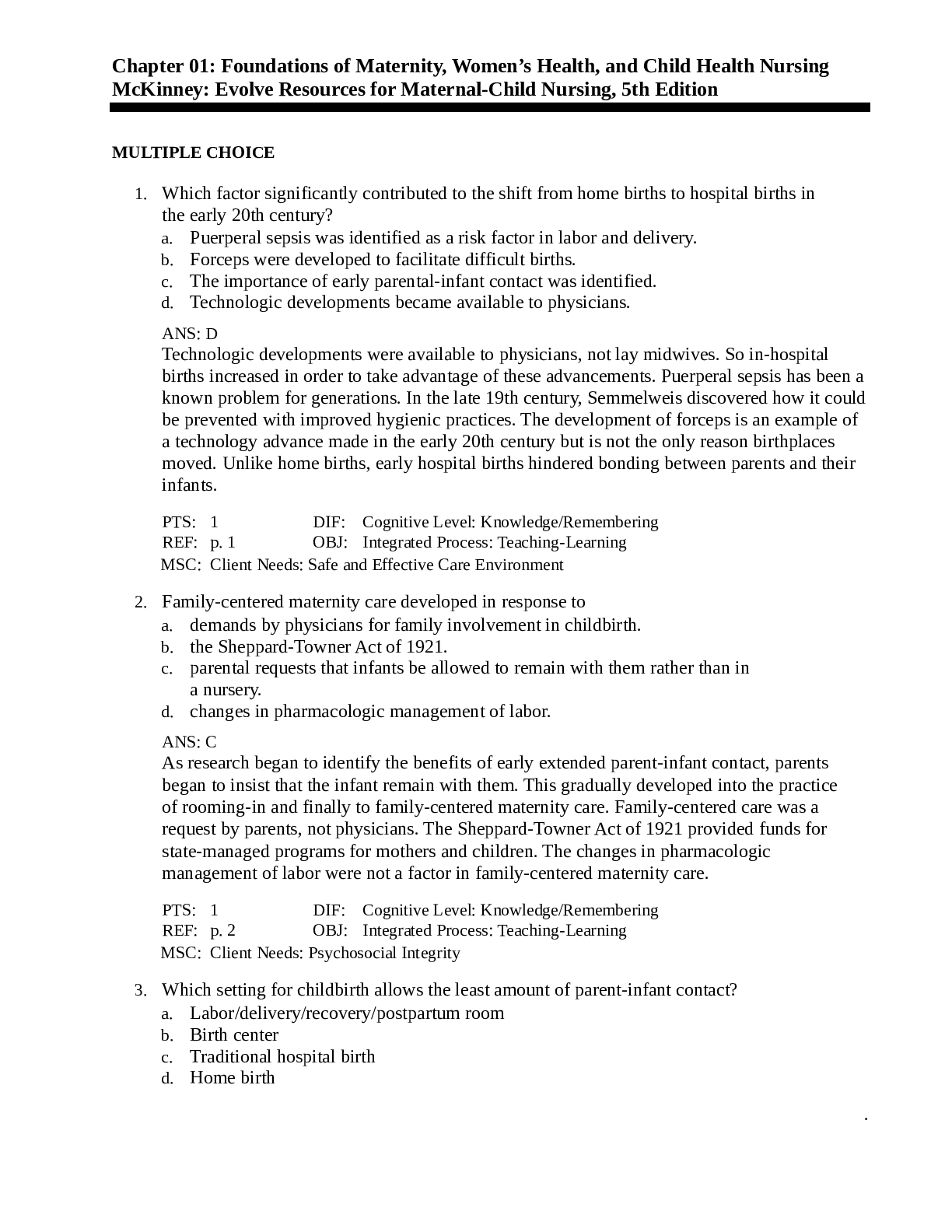
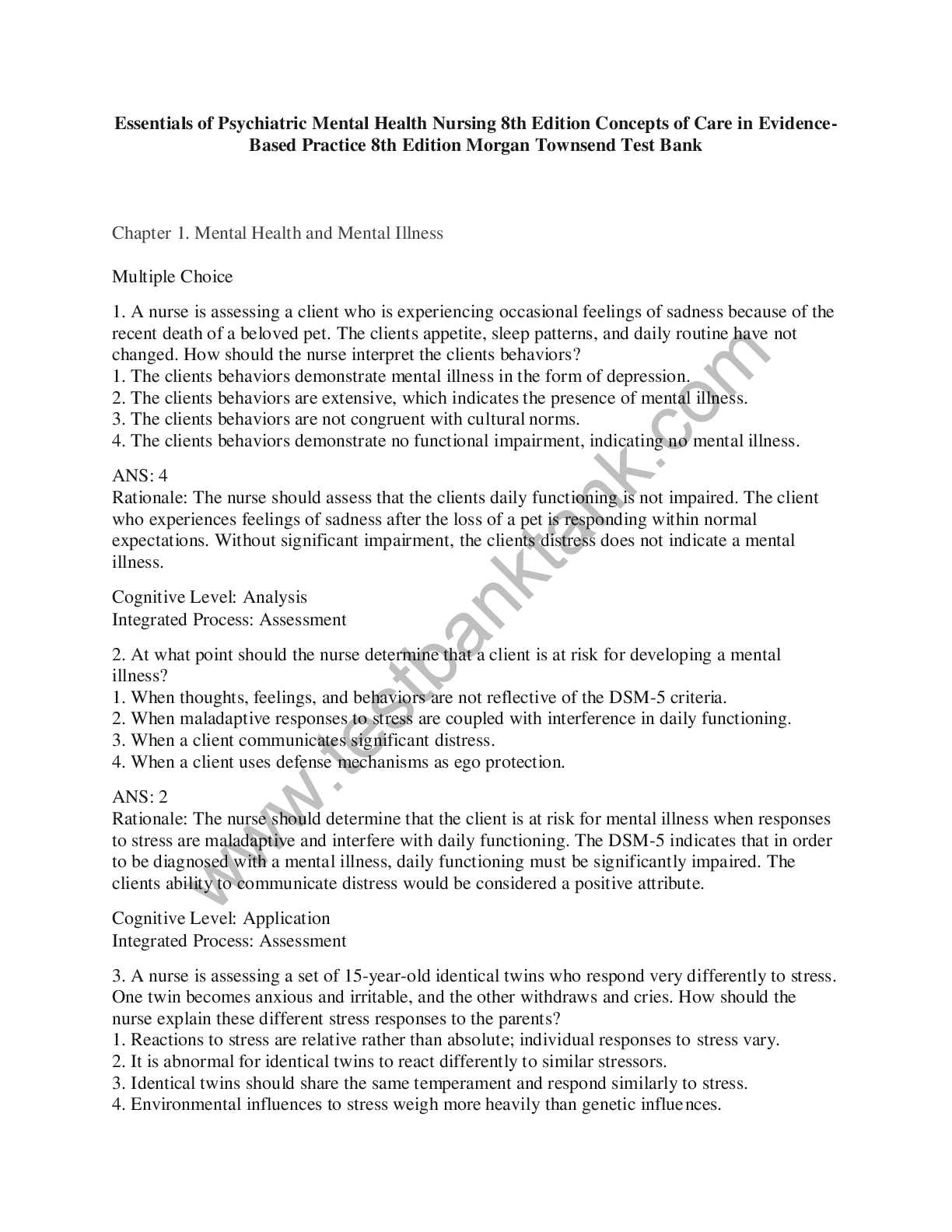
.png)

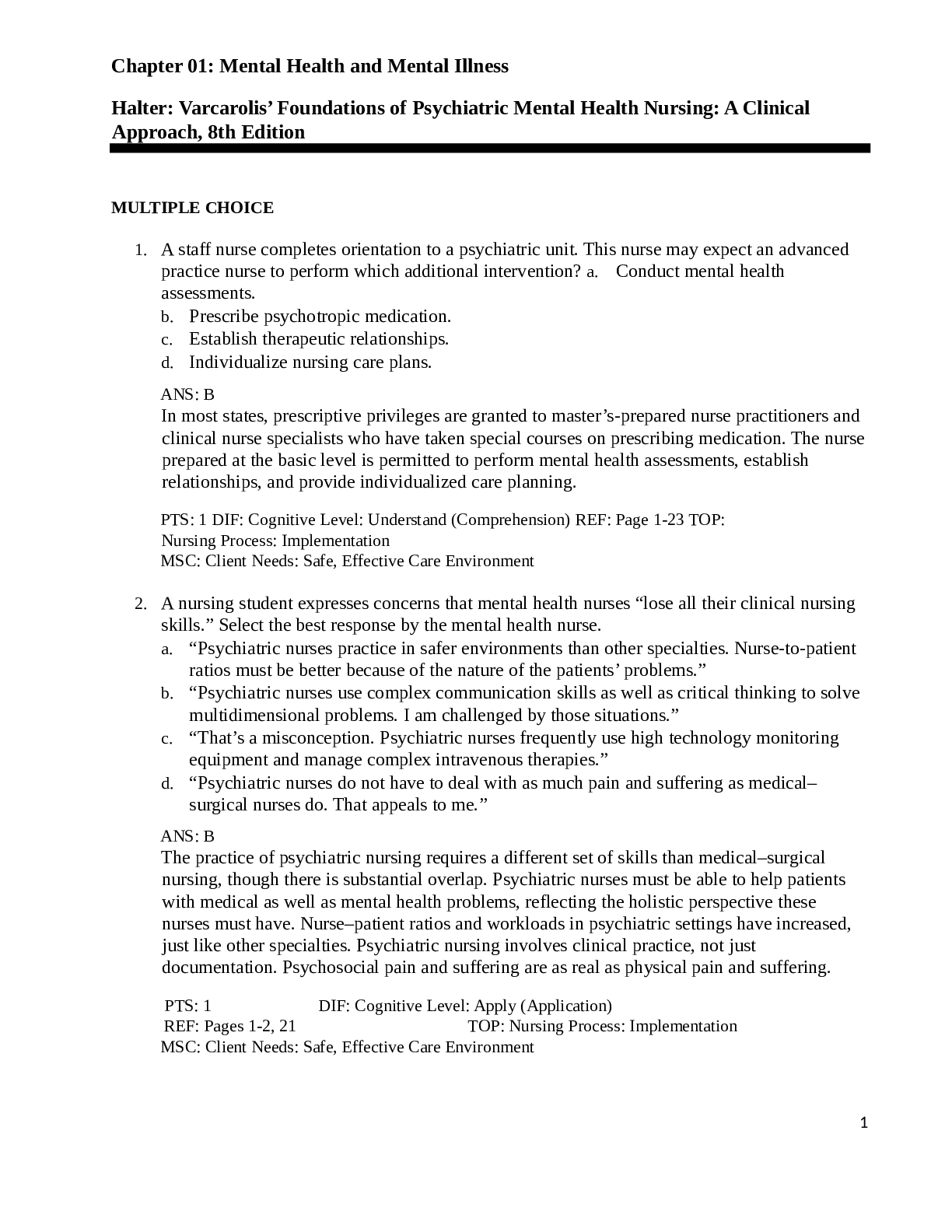





TEST BANK FOR Dulcan’s Textbook Of Child And Adolescent Psychiatry.png)
